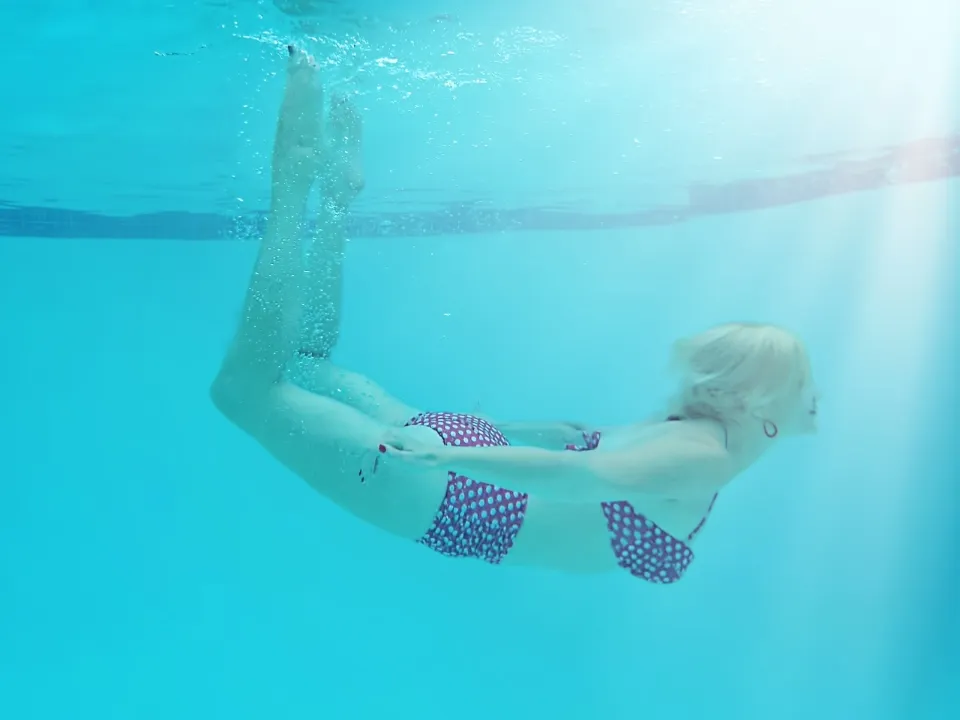How Long After Surgery Until You Can Swim in A Pool?
You must not go swimming until the wound has fully healed and there are no scabs left. After surgery, you should wait about 6 weeks before going swimming.
Swimming After Different Types of Surgery
Swimming is a low-impact exercise that can help to build muscle and improve cardiovascular fitness after a variety of surgical procedures. Prior to beginning any new exercise program after surgery, it is crucial to speak with a doctor or physical therapist because each person’s needs and recovery time will vary. Here are some general considerations for swimming after different types of surgery:

- After abdominal surgery, such as a c-section or appendectomy, it is important to wait until the incision has fully healed and the doctor has cleared the individual for exercise. Swimming can be a good way to build core strength and increase overall fitness, but it’s important to start out slowly and build up the intensity of the workout as your body gets stronger.
- After orthopedic surgery, such as a hip or knee replacement, it is important to follow the physical therapist’s recommendations for exercise and to use any assistive devices as needed. Swimming can be a useful exercise for increasing muscle strength and mobility, but it’s important to avoid any strokes or movements that could be painful or uncomfortable.
- After heart surgery, such as a coronary artery bypass graft (It’s important to start slowly and adhere to the doctor’s advice when it comes to exercise after CABG) or valve replacement. Swimming can be a good way to improve cardiovascular fitness and strengthen the muscles, but it is important to pay attention to the body’s limits and stop the activity if there is any chest pain or discomfort.
- After a hair transplantation surgery, it is generally safe to swim as long as the incisions have fully healed and there is no discomfort or irritation. Wearing a swim cap or using a protective hair product prior to swimming is crucial to protecting the scalp from the sun and chlorine. It is also important to avoid submerging the head completely under water for the first few weeks after surgery, as this can increase the risk of infection. It may be helpful to ask the doctor or surgeon for specific recommendations regarding swimming after a hair transplantation surgery.
In order to ensure a secure and efficient recovery, it is crucial to speak with a medical professional and abide by their guidelines for swimming after surgery.
What is Laparoscopic Surgery?
Small incisions and specialized tools, such as a laparoscope (a thin, lighted tube with a camera), are used to perform laparoscopic surgery, also known as minimally invasive surgery. Through one of the incisions, the surgeon inserts the laparoscope, which he or she uses to view the patient’s internal organs and carry out the procedure. Since there are fewer incisions and less bodily trauma with laparoscopic surgery than with traditional surgery, it is less invasive. When compared to conventional surgery, this may lead to a quicker recovery, less discomfort, and fewer complications. Gallbladder removal, hernia repair, and appendectomy are among the many procedures that frequently involve laparoscopic surgery.
Here are ten examples of laparoscopic surgery:
- Gallbladder removal (laparoscopic cholecystectomy)
- Hernia repair (laparoscopic hernia repair)
- Appendectomy (laparoscopic appendectomy)
- Gastric bypass surgery (laparoscopic gastric bypass)
- Hysterectomy (laparoscopic hysterectomy)
- Gastric banding (laparoscopic gastric banding)
- Colorectal surgery (laparoscopic colorectal surgery)
- Splenectomy (laparoscopic splenectomy)
- Adrenalectomy (laparoscopic adrenalectomy)
- Nephrectomy (laparoscopic nephrectomy)
Note: These are just a few examples of laparoscopic surgery, and the specific procedure performed will depend on the individual’s condition and needs. It is important to consult with a healthcare professional for more information and to determine the best course of treatment.
How Long After Laparoscopic Surgery Can I Swim?
Once the incisions have fully healed and the patient has been given the all-clear by the doctor to exercise, swimming is typically safe after laparoscopic surgery. However, the precise timing will be determined by the type of laparoscopic surgery that was done and the patient’s general recovery process. In general, it is best to consult with the surgeon or doctor for specific recommendations and to follow their guidance.
Here are some general considerations for swimming after laparoscopic surgery:
- Allow the incisions to fully heal before swimming. This usually takes 7 to 10 days, though it could take longer depending on the type of surgery and how quickly the patient recovers.
- As your body gets stronger and becomes more accustomed to the exercise, start out slowly and gradually up the intensity.
- Pay attention to the body’s limitations and stop the exercise if there is any pain or discomfort.
- Use any necessary assistive equipment, such as pool noodles or flotation devices, to help with balance and support.
- Follow any guidelines or restrictions provided by the doctor or physical therapist, such as avoiding certain strokes or limiting the amount of time spent in the water.
By following these precautions, swimming can be a safe and beneficial form of exercise after laparoscopic surgery. To ensure a safe and effective recovery, it is crucial to speak with a healthcare professional and abide by their recommendations.

How Long After Abdominal Surgery Can You Swim?
Once the incision has fully healed and the patient has been given the all-clear by the doctor to engage in physical activity, swimming is typically safe following abdominal surgery. However, it is important to consult with the surgeon or doctor for specific recommendations and to follow their guidance. Starting slowly, being aware of one’s physical limitations, and using aids as necessary are also important.
Can You Go Swimming 2 Weeks After Surgery?
As long as the incision has fully healed and the patient has been given the all-clear by the doctor to exercise, swimming is typically safe to do two weeks after surgery. The precise timing, however, may change based on the procedure’s nature and the patient’s general recovery.
How Soon Can I Swim After a Laparoscopic Appendectomy?
Once the wounds have completely healed and the patient has been given the all-clear by the doctor to exercise, swimming is typically safe after a laparoscopic appendectomy. However, it is important to consult with the surgeon or doctor for specific recommendations and to start slowly, pay attention to the body’s limits, and use assistive devices as needed.
How Long Does It Take for a Laparoscopic Incision to Heal?
Laparoscopic incisions typically heal in 7 to 10 days, but the precise timeframe may change depending on the patient’s general health and the procedure type. It is crucial to adhere to the surgeon’s or doctor’s instructions for taking care of the incisions, which may include keeping them clean and dry, changing the dressing as needed, and avoiding strenuous activity or heavy lifting. Additionally, it’s crucial to keep an eye out for any infection-related symptoms like redness, swelling, or discharge around the incisions and to get in touch with the healthcare provider if you notice any. In general, it’s crucial to give the wounds enough time to heal before returning to regular activities, like swimming.
Is It Safe to Take a Hot Bath a Week After Surgery?
After surgery, am I able to take a bath? Most patients will be able to take a hot water bath after the stitches have been taken out. You should first speak with your doctor if you have a cut or wound that needs to be cleaned frequently.
Conclusion
After laparoscopic surgery, the majority of patients can swim whenever they feel well enough. It is important to check with your surgeon before swimming, however, as some types of surgery require special care. For instance, you should avoid swimming in water that is too cold or hot if you had surgery to remove your gallbladder because it can cause cramping.
